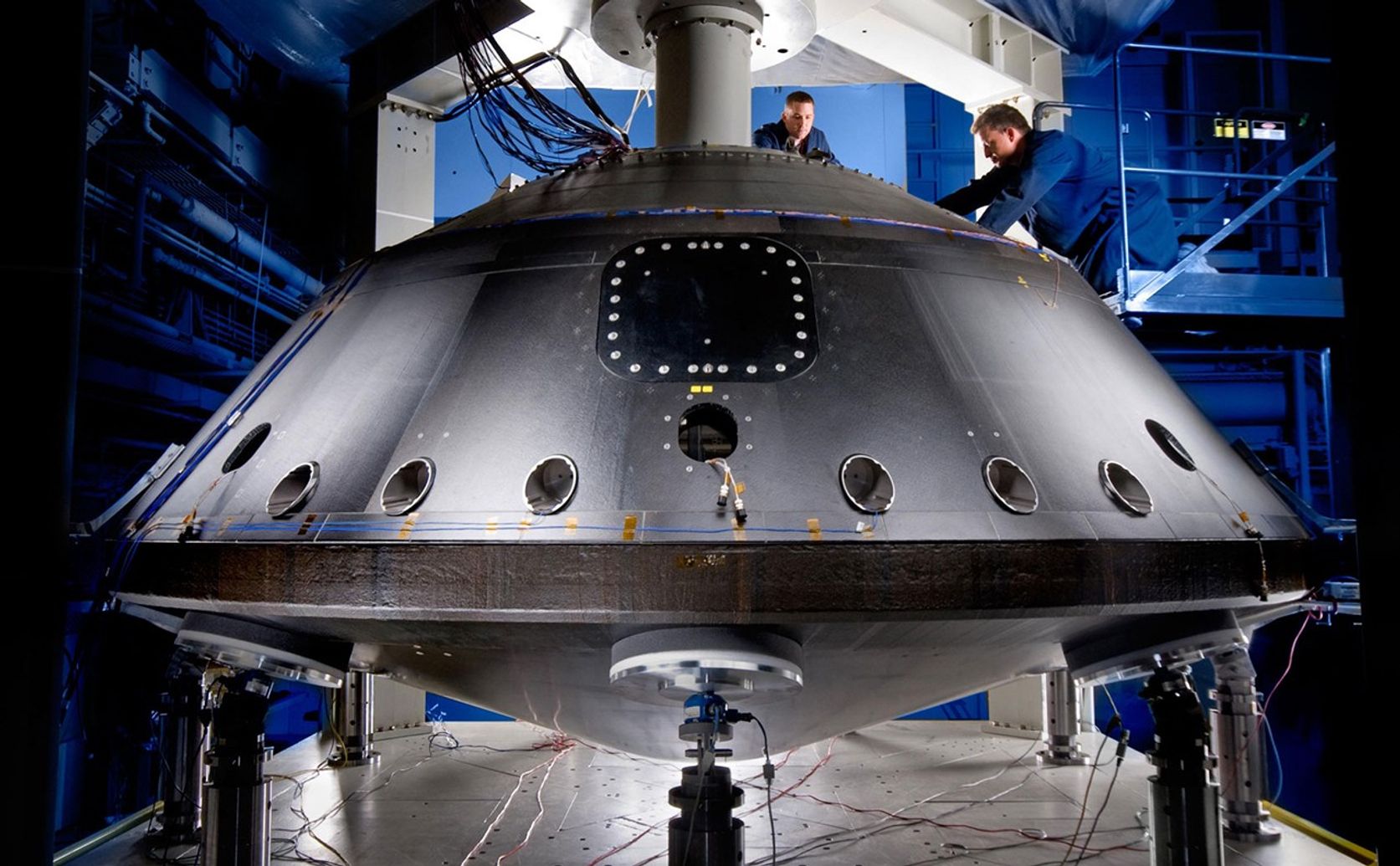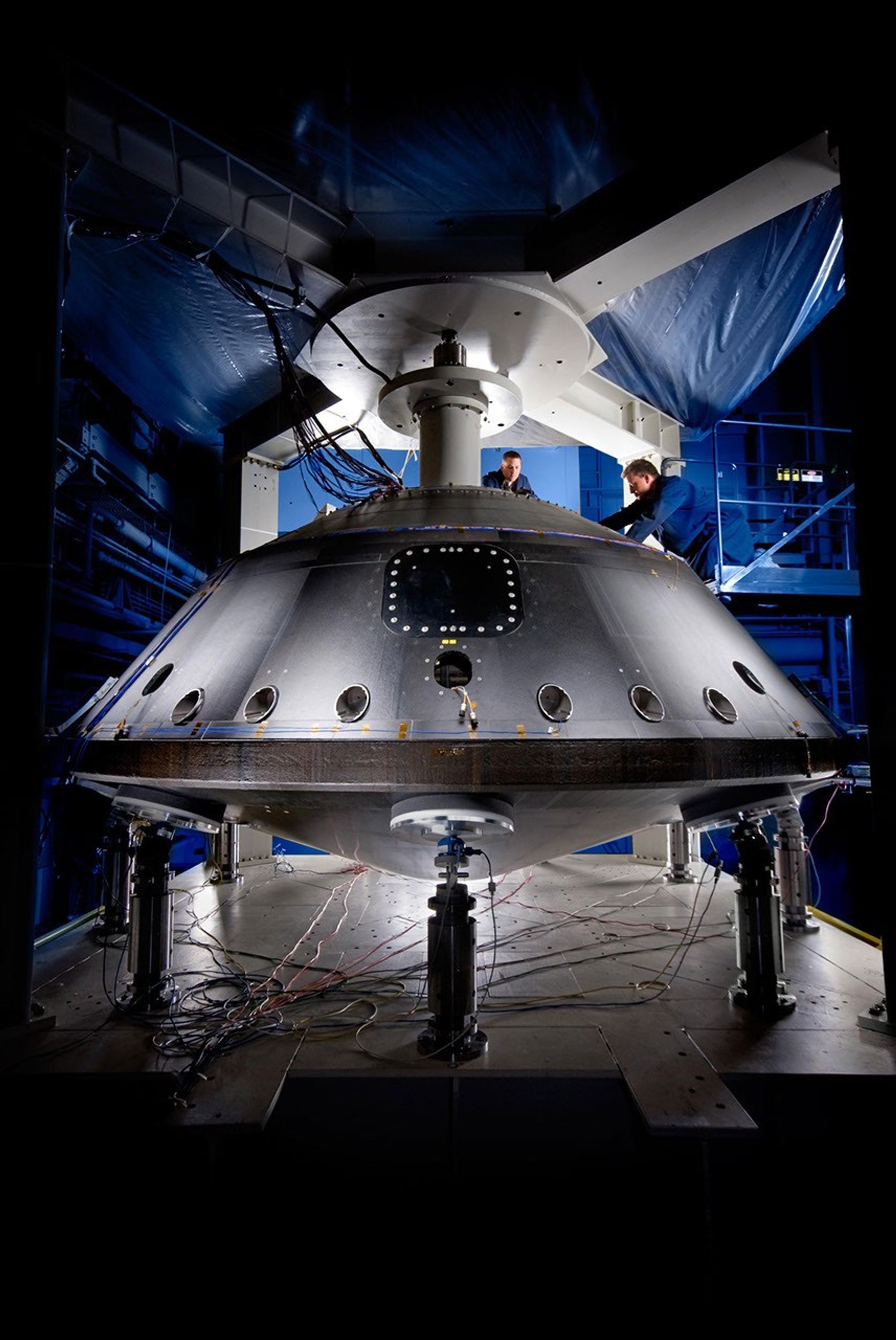Aeroshell for Mars Science Laboratory
| Credit | NASA/JPL-Caltech |
|---|---|
| Language |
|
This image from July 2008 shows the aeroshell for NASA's Mars Science Laboratory while it was being worked on by spacecraft technicians at Lockheed Martin Space Systems Company near Denver.
This hardware was delivered in early fall of 2008 to NASA's Jet Propulsion Laboratory, Pasadena, Calif., where the Mars Science Laboratory spacecraft is being assembled and tested.
The aeroshell encapsulates the mission's rover and descent stage during the journey from Earth to Mars and shields them from the intense heat of friction with that upper atmosphere during the initial portion of descent.
The aeroshell has two main parts: the backshell, which is on top in this image and during the descent, and the heat shield, on the bottom. The heat shield in this image is an engineering unit for testing. The heat shield to be used in flight will be substituted later. The heat shield has a diameter of about 15 feet. For comparison, the heat shields for NASA's Mars Exploraton Rovers Spirit and Opportunity were 8.5 feet and the heat shields for the Apollo capsules that protected astronauts returning to Earth from the moon were just under 13 feet.
In addition to protecting the Mars Science Laboratory rover, the backshell provides structural support for the descent stage's parachute and sky crane, a system that will lower the rover to a soft landing on the surface of Mars. The backshell for the Mars Science Laboratory is made of an aluminum honeycomb structure sandwiched between graphite-epoxy face sheets. It is covered with a thermal protection system composed of a cork/silicone super light ablator material that originated with the Viking landers of the 1970s. This ablator material has been used on the heat shields of all NASA Mars landers in the past, but this mission is the first Mars mission using it on the backshell.
The heat shield for Mars Science Laboratory's flight will use tiles made of phenolic impregnated carbon ablator. The engineering unit in this image does not have the tiles.
JPL, a division of the California Institute of Technology, manages the Mars Science Laboratory Project for the NASA Science Mission Directorate, Washington.

























